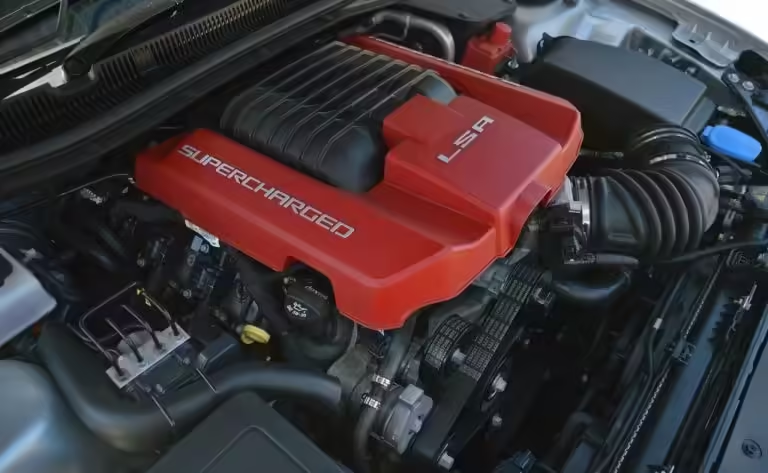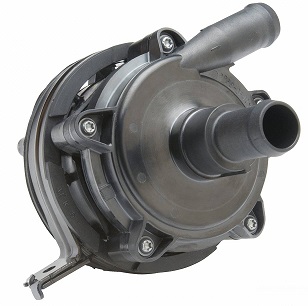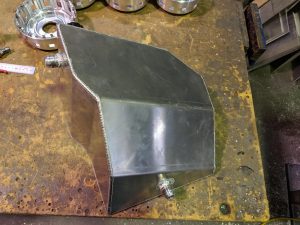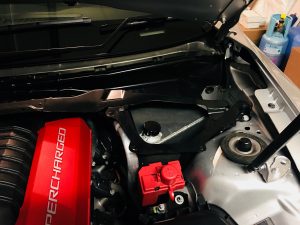
In this article we are going to discuss reservoirs for:
- Daily driving
- Drag racing
- 1 mile racing
- Circuit racing
When buying or building a reservoir you need to know the intended purpose, are you drag racing with daily street driving, doing 1 mile racing or circuit racing?
You need to know the flow rate of your intercooler pump in order to correctly determine the size of reservoir you will need. Knowing the flow rate is so that whilst you are at WOT (wide open throttle) you have enough fluid volume to be passing the same temperature of fluid through your intercooler core for the entire time spent at WOT.
Intercooler pump flow rate:
On the car flow rate is important as this is what the pump actually flows through the intercooler cores. “Advertised” flow rates are usually from 1 empty bucket into another and do not reflect the “on the car” flow rate.
During a ¼ mile pass the fluid as example maybe exposed to 3 laps of the intercooler system resulting in the fluid changing temperature 3 times over eg 20c, 40c and then 60c this will raise your intake air temperature.
Adding a reservoir will stabilise the intake temperatures by only allowing the fluid to do 1 lap of the entire system as example if that fluid is 20c it will be 20c for the entire time you are at WOT.

Factory LSA powered cars:
The factory system can be difficult to bleed air, some cars from factory have had the intercooler pumps not running and several workshops have claimed the pumps to be bad. The pump is certainly not a bad pump it’s actually very good, the only issue is bleeding the air out and the pump is load sensitive if the system is 95-98% full the ECU can and will switch off the pump to protect it from burning out.
Adding a reservoir will add head pressure on the pump so that it never runs dry and the pump will never turn off again.
Reservoir Location:
The location of the reservoir is critical to the performance of the system, there are several things in designing a reservoir that must be taken into consideration.
-
-
-
-
-
- The fluid should gravity feed your intercooler pump eg placing head pressure on to the pump, this keeps the pump constantly primed with fluid.
- The inlet/outlets should be far enough apart so that the entire volume of fluid in the reservoir is used and the fluid isn’t doing a 180 degree turn on itself and not using the entire volume.
- The return inlet should be as high as possible and returning the fluid into an empty void creating a depressurized area so the pump doesn’t have to work as hard, pushing into a pressurised tank will be harder on the pump and reduce the flow rate.
-
-
-
-
What you should not do:
In the past we have had customers ask, “Can you turn the front reinforcement bar into a reservoir?” Whilst this may appear to be a good space saving idea in a practical sense it’s not going to work. You have created a large empty long void possibly 6-8L in size, your intercooler pump is going to have to fill and pressurize this entire volume of fluid in order to then pass the fluid out the other end and up to the intercooler. This is going to put extra pressure on the pump and slow the fluid down quite a lot which will increase your WOT intake air temps from lack of coolant flow. Now some might say, “we can fit a larger pump”…but that system is still not going to be performing as best it can if it was setup correctly from the start. The larger pump would again perform better if setup with a proper reservoir. This along with adding weight over the front end isn’t ideal especially in drag racing.

Drag Racing, daily driving:
For drag racing and daily driving we make a 12L reservoir, this suits the Holden/HSV/Pontiac G8/Chevy SS.
The volume combined with intercoolers, chiller and hoses is around 15L on the above cars this is enough fluid to last you 55sec of WOT, meaning the fluid is only going to complete 1 lap of the system every 55sec.
In terms of drag racing this provides enough time to do a burnout, stage the car (whilst cooling back down) and then do a ¼ mile pass, customers and we have noticed when fitted with a chiller and reservoir our intake temps typically are around 10c on the start line and around 40-45c crossing the finish line. Within 15-20sec of getting off the throttle the intake temps are back below ambient from the rush of cold unused fluid that has then cooled the blower back down again.
By the time you collect your time slip you then have reached your minimum intake air temp again and are ready to race again.
This reservoir suits both daily driving and drag racing.


1 mile racing:
For 1 mile racing with the above 12L reservoir you have enough fluid for 55sec and you will have more than enough fluid volume as the race should be over in 25-30sec the cool down time is going to very good as well.
Circuit racing:
Circuit racing you are going to want to use a decent sized reservoir 5-20L in size along with your heat exchanger. Normally for drag racing, daily driving, power cruise guys we delete the heat exchanger from the car entirely. However for circuit racing you should retain the heat exchanger along with the chiller and reservoir.
The idea behind this is before the race you would start the car and let it cool down your entire volume of fluid and then during the circuit race it would struggle to heat up that fluid whilst you are also cooling it down with the heat exchanger and intermittently cooling it with the interchiller when not at WOT (AC system turns off at WOT)
Summary:
A correctly sized and located reservoir will reduce intake air temperatures, along with providing adequate head pressure to your intercooler pump and will result in a HP increase from the fluid not getting as hot.
